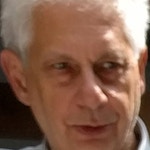Architectural Ceramic Assemblies
A Collaborative Research Model for Industry Engagement
Sign in and Register
Create an Account
Overview
Abstract
This paper documents a six year academia/industry collaboration between researchers at the Department of Architecture, University at Buffalo (SUNY) and the Boston Valley Terra Cotta Company. For the company, it was an essential undertaking to be able to meet the design challenges in a globally competitive marketplace. For the Department of Architecture, it meant fulfilling the three core tenets of its mission: professional education, advancing the profession through significant research and outreach, and economic development by growing the number and quality of jobs available in Western New York.
The engagement involved faculty and students developing new tools and work flows to facilitate better responses to Boston Valley’s architectural clients. They assisted with the design development phase as well as improving the manufacturing processes that resulted in several award winning building projects. While the faculty taught classes to company employees and set technology agendas with senior management, the students themselves became the real change agents. The factory floor became the proving ground for the introduction of 3D scanning, parametric modeling, digital modeling, 5 axis CNC milling, 3 axis wire cutting, computational fluid dynamics for extrusion die design, post extrusion ruled surface cutting, and numerous CAD/CAM innovations.
Furthermore, the collaboration has expanded beyond specific projects into the annual Architectural Ceramic Assemblies Workshop (ACAW); a forum for a worldwide collective of architects, facade engineers, ceramic artists, architectural manufacturers, university faculty and students to develop bio-climatically responsive facades and surfaces. This week-long eworkshop’s goal is to educate the architectural profession about ceramics, test the state of the art in terra cotta manufacturing and develop new research agendas that can be undertaken through professional, manufacturing and academic partnership.
Authors

Omar Khan
Associate Professor
University at Buffalo (SUNY)
omarkhan@buffalo.edu

Bill Pottle
Director of Business Development
Boston Valley Terra Cotta
Billp@Bostonvalley.com

Mitchell Bring
University at Buffalo (SUNY)
mbring@buffalo.edu
Keywords
Embedded Research - Boston Valley Terra Cotta and the University at Buffalo, Department of Architecture
Boston Valley Terra (BVTC), originally named Boston Valley Pottery was established as a brick producer in the 1880’s. In the 1980’s, it was purchased by the Krouse family and rebranded
Access Restricted
Case 1 - Photogrammetry: A Technology for Enabling Digital Craft
BVTC’s standard practice for restoration projects involved the removal of the original historic ornament from the building, block by block. Some of these pieces would be considerably damaged and broke
Access Restricted
Case 2 - Digital Workflow: Design Development with Manufacturing
The architects at Machado Silvetti were exploring a complex tiled surface for the Asian Art Study Center at the Ringling Museum of Art. They had already investigated other cladding materials
Access Restricted
Case 3 - Inventing New Tools: CNC Ceramic Wire Cutter
Graduate student Peter Schmidt was one of the student researchers on the team in the Meshlab. When it came to doing his Master of Architecture thesis, he identified a technological
Access Restricted
Architectural Ceramic Assemblies Workshop (ACAW)
The Meshlab has been absorbed into BVTC’s corporate structure, with many of the students that worked in it now employed by the company and leading its digital modeling and fabrication
Access Restricted
Conclusion and Future Directions
Our engagement with Boston Valley Terra Cotta has had at its center a desire to affect manufacturing by narrowing the gap between ideation and production. Adoption of digital technologies for
Access Restricted
Acknowledgements
Boston Valley Terra Cotta, Sustainable Manufacturing and Advanced Robotic Technologies (SMART)
Rights and Permissions
Banham, R. The Architecture of the Well-Tempered Environment. The University of Chicago Press; 2nd edition, 1984.
Cortright, Joseph. "Making Sense of Clusters: Regional Competitiveness and Economic Development." https://www.brookings.edu/rese... (accessed September 28, 2017).